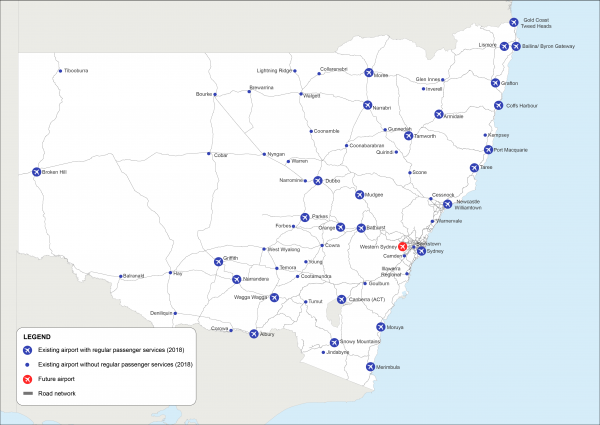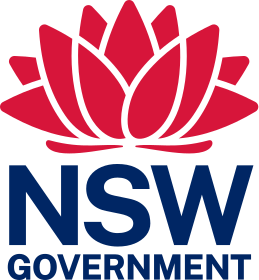
NSW air network
Air transport is generally used for moving high value and time-sensitive goods.
NSW Air Network
The amount of freight moved by air in NSW is relatively small in terms of its volume when compared to other modes of transport but is highly valuable to the NSW economy.
Airfreight is generally comprised of premium or time-sensitive, perishable goods. Examples of products suitable for air freight include jewelry, currency and gold, fresh seafood, premium meats, fruit, pharmaceutical and medical products, mobile phones, computer hardware and critical spare parts and materials.
Over 80 percent of the existing NSW air freight task is carried in the belly-hold of passenger aircraft, with the remainder transported by dedicated freight aircraft.
NSW is also the largest net importer of air freight in Australia, handling most of the country’s air freight imports by volume and by value. More than 98 percent of NSW’s air freight products were exported via Sydney Airport in 2018.
Sydney Airport (Kingsford Smith)
According to 2019 International Airfreight Indicator, Sydney Airport (Kingsford Smith) is the most significant air freight hub in Australia representing 45 percent of total air freight imports and exports by both value and volume in the financial year 2017-18.
Transport Performance and Analytics at Transport for NSW have forecast volumes of exports and imports to increase from 369,000 tonnes in 2016 to 613,000 tonnes in 2036 (a 65 per cent increase).
The Sydney Airport Master Plan 2039 sets out the strategic direction for the development of Sydney Airport in preparation for this increase.
Current curfews at Sydney Airport restrict aircraft movements between 11:00 pm and 6:00 am, limiting future growth for freight capacity.
Western Sydney International Airport (Nancy-Bird Walton)
Construction of Western Sydney International Airport (Nancy-Bird Walton) is underway and due to commence operations in 2026. The airport is a transformational infrastructure project that will generate economic activity, provide employment opportunities closer to home for people in the Western Sydney region, and meet Sydney's growing aviation needs.
The airport will operate curfew free servicing passengers and freight both domestically and internationally. It will be an important freight hub for Greater Sydney as it will enable dedicated overnight freighters unable to land at Sydney Airport due to curfew restrictions, and cargo destined for Western Sydney logistics centres. This will assist the air freight sector to improve productivity.
The Western City and Aerotropolis Authority (WCAA) has been tasked by the NSW and Federal governments to design and deliver a new Western Parkland City CBD, creating a dynamic new place for people to live, work and learn. At its heart will be the Aerotropolis, an innovative smart city that harnesses Sydney’s first 24/7 international airport to attract emerging and new industries, capture investment and drive high-value, skilled and resilient jobs in Western Sydney.
Regional Air Freight
The NSW Government commissioned an independent, International Air Freight Connectivity Pre-Feasibility Study (PDF, 3.64 MB) in early 2019 to explore ways to improve the competitiveness of regional NSW exports suitable for air freight.
The focus of the study was on getting fresh NSW produce to international markets more efficiently. The study was published in November 2019. A summary of the key findings can be found in the Air Freight Connectivity Fact Sheet (PDF, 1.46 MB).
The study assessed:
- Key international markets
- High-value perishable export commodities
- Production regions in NSW
- 60 airport locations which service Regional NSW
- Air freight supply chains, including existing infrastructure and operational requirements
For more information please click here.
NSW Air Network Map
Image

Image controls:
